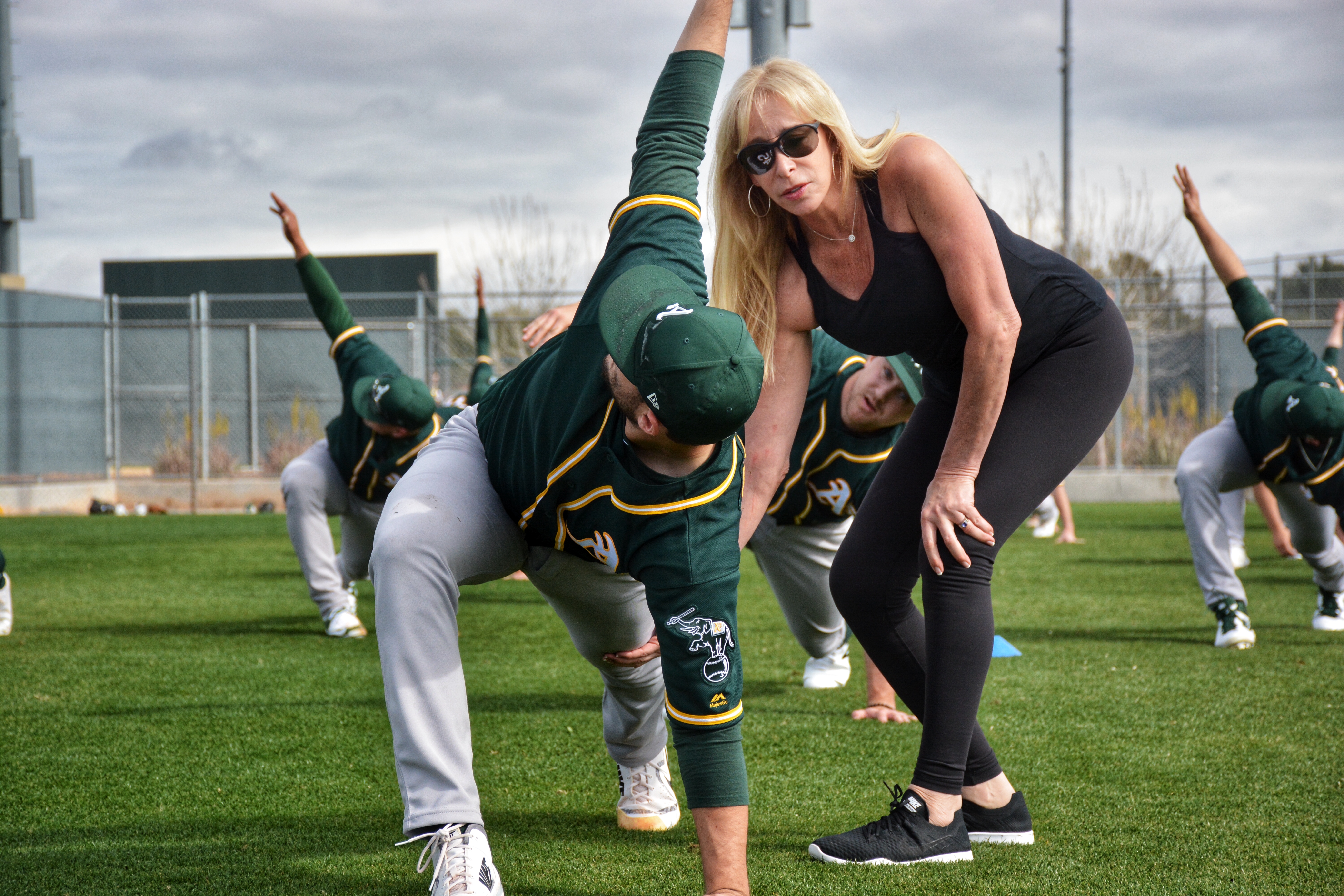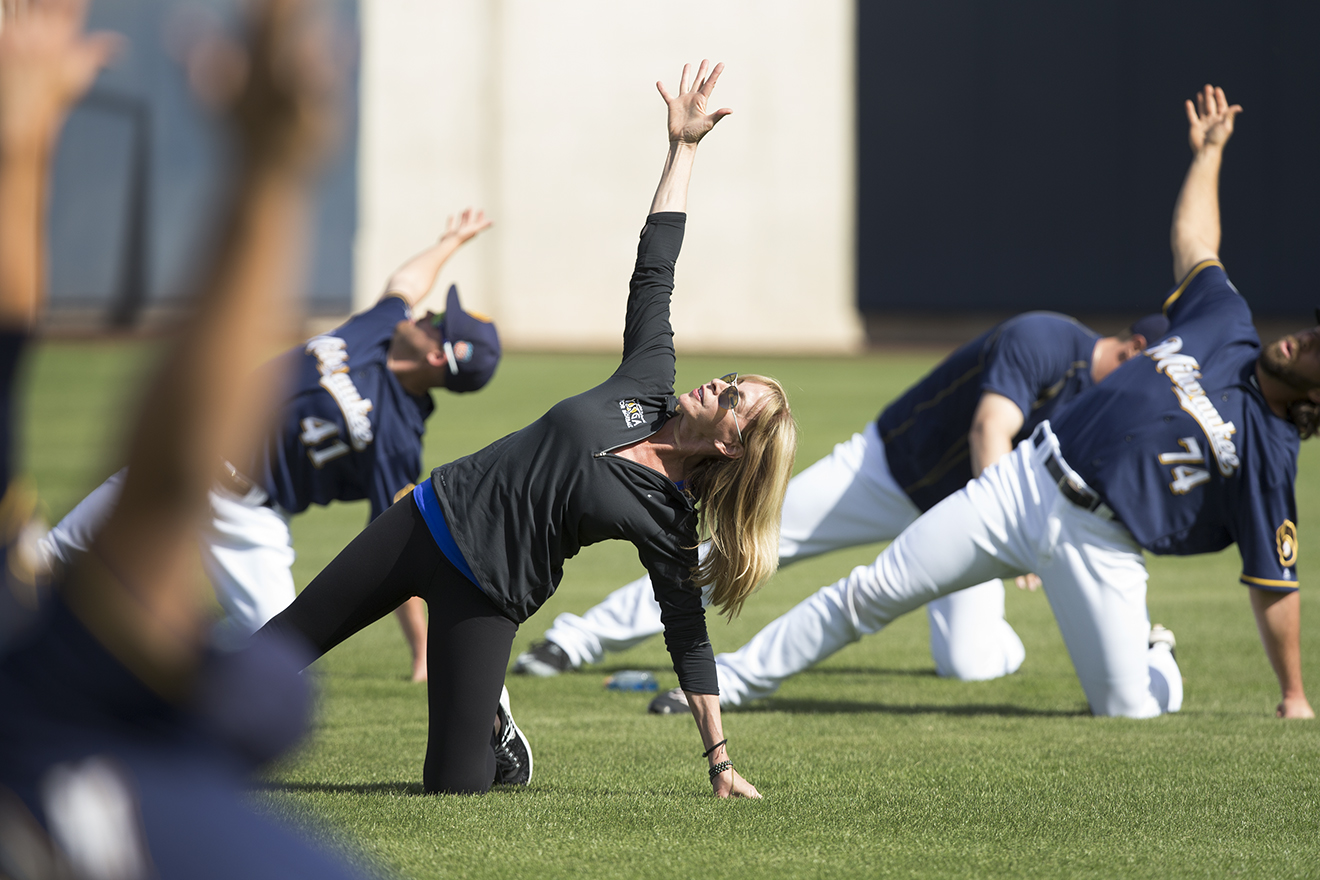Yesterday we learned about the numerous ways a player might engage their breath off the field to help them perform better on it. We found they can get going with asanas and movement through poses, or meditation and stillness. We discussed the myriad obstacles in achieving a rhythm with either practice—be it the highly regimented schedule players maintain or the ease with which they can slip into less productive or even counterproductive habits once they’re away from the game and team watch.
What about when they’re on the field, though? What’s it like to try to manage your breath then?
Have you ever tried to be productive when you’re shook? Maybe the wrong person said the right thing to get under your skin, or you got cut off in traffic. Or tripped up the stairs on the way to an important meeting, and then stumbled through your words for the first few minutes. Regardless of the situation, we’re less productive when we’re worked up. And that’s just us layfolk.
Katherine Roberts, founder and president of Human Performance for Sports, emphasizes that for athletes, “breathing is everything.” She would know: Roberts has worked in MLB for 17 years and with more than half the teams in the league, holds a degree in chain reaction biomechanics, is certified in advanced classical pilates and as a yoga instructor, and is an expert in understanding three-dimensional motion analysis and its relationship to performance. She’s also worked in golf even longer than she has in baseball, and has written two books—Yoga for Golfers and Swing Flaws and Fitness Fixes.

If we’re going to acknowledge that breathing is everything, we also have to acknowledge that we’re not terribly good at it. And since the average person takes about 20,000 breaths a day, squandering adequacy in this capacity can add up fast. For professional athletes, it could have an even more pronounced impact. Think about Jed Lowrie, for example. Before the 2017 season, he had surgery for a deviated septum, which causes nasal congestion and sleep loss. He spent 2017 and 2018 defying aging curves and being more productive than he’d ever been in any of his previous nine campaigns in the major leagues.
While not every case is as extreme as Lowrie’s, the point is that a player’s breaths can help them manage their energy throughout the course of a long season. Roberts’ main goal when working with athletes is threefold: provide them with proprioception, or the awareness of their body in space; teach them one-pointed concentration; and instruct them how to be fully present in the game. And it all starts with a single breath, because efficient breathing is integral to every movement pattern. This is especially true in baseball since, aside from golf, it’s the only sport that doesn’t get a running start in the creation of explosive power.
What we’re really talking about here is the delicate route a player takes between their parasympathetic and sympathetic nervous systems. Their breaths are essentially the vehicle that moves them from Point A to Point B and back again. Through this path, a player is conserving and spending energy, but if they’re not in tune with their breath, there is a good chance they aren’t being as impactful as they could or want to be. “A muscle needs to be free of tension to efficiently, eccentrically load to efficiently, concentrically contract,” Roberts says. If a baseball player’s muscles are contracted when they go to torque, it becomes extremely difficult to have any burst. Imagine trying to run down a liner as an outfielder if you’re tense at the crack of the bat, or catch up to a 95 mph fastball at the plate if you’re already contracting the muscles in your core and legs.

The tricky thing about teaching this to individual players is that the path is different for each one. One player might be the guy who feeds off getting fired up about playing the game, while another might need to calm down to play it at the high level to which they’ve become accustomed. Each one employs his breaths differently despite having the same goal. When there are tens of thousands of fans in the stands, it’s easy to think about them instead of what is immediately in front of you on the mound, in the box, or around the diamond; to let your breath be influenced by them instead of by engaging what is immediately in front of you in that moment.
This is the reason Roberts says her work is a game of adaptability, a concerted effort to help an athlete become aware of their specific patterns of moving and breathing when the stakes are as high as they can possibly get in-game. Before a pitch, a player is gathering mechanical information. Then they have a chance to take a long, cleansing exhalation—the kind that you can feel diligently move through your body as it relaxes your muscles and primes them for motion. “When they understand their own breathing pattern and how to incorporate it for peak performance, it can be a game-changer,” says Roberts. But not taking that chance is letting the moment slip through your fingers.
Of course, the good thing about the baseball season is that it’s composed of millions of moments. Each one presents a player the opportunity to grow into awareness and mindfulness that unlocks a higher understanding of their own bodies. No matter what just happened in the last moment, Roberts affirms that “breathing [can work] as a reset button for the mind.”
(Photos courtesy Katherine Roberts/Human Performance for Sports)
